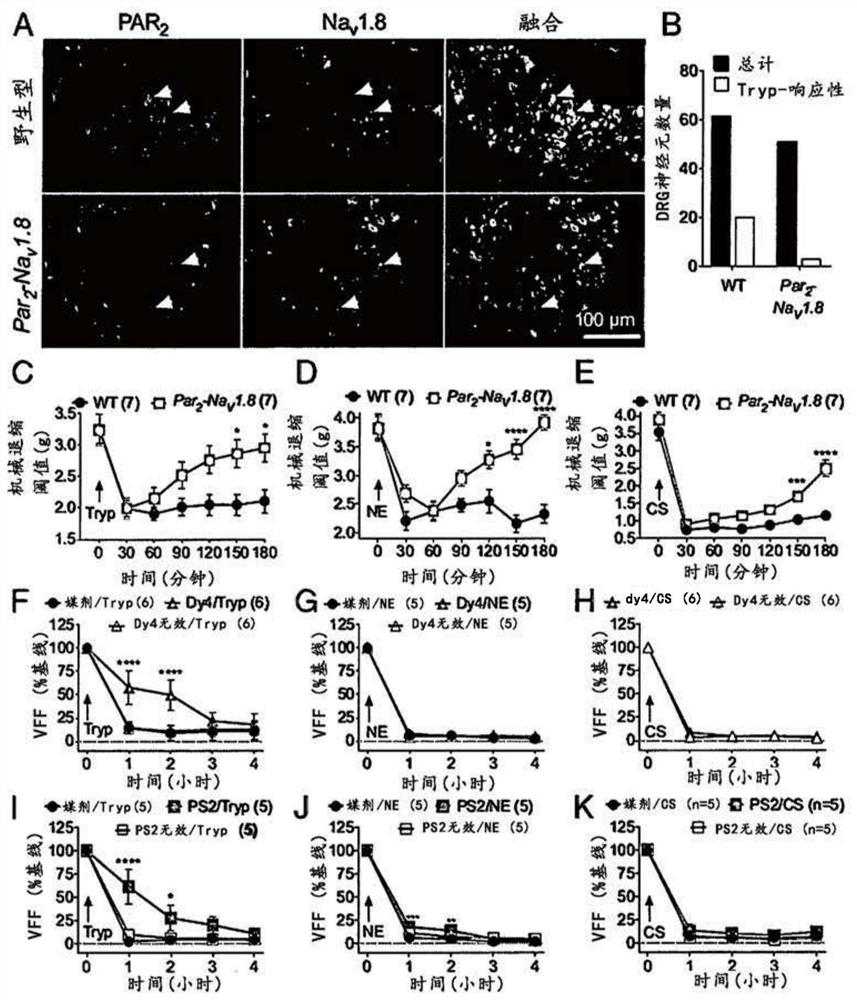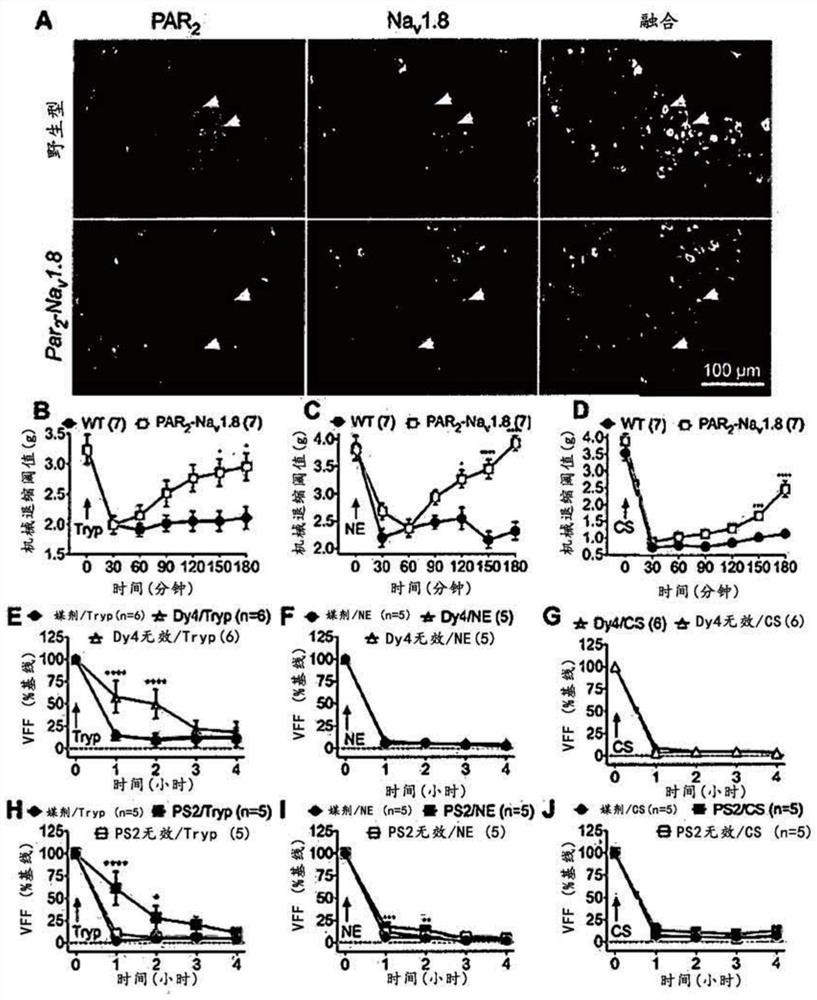Inhibitors of protease activated receptor-2
A -NH2, -C1-C20 technology, applied in the field of PAR2 inhibitors, the treatment of diseases and disorders mediated by PAR2 signaling
- Summary
- Abstract
- Description
- Claims
- Application Information
AI Technical Summary
Problems solved by technology
Method used
Image
Examples
Embodiment 1
[0298] Example 1: Synthesis of ethyl 6-chloroimidazo[1,2-b]pyridazine-2-carboxylate (step (a) of general synthesis scheme 1)
[0299]
[0300] In a 1 L round bottom flask was added 6-chloropyridazin-3-amine (30 g, 0.2316 mol) dissolved in DMF (300 mL). Then ethyl 3-bromo-2-oxo-propionate (38 mL, 0.3 mol) was added in portions. The mixture was kept at 50°C for 1.5 hours. The mixture was cooled to room temperature with a water / ice bath, and water (600 mL) was added dropwise to the reaction mixture over 2 hours. It was then stirred overnight at room temperature. The formed precipitate was filtered off by filtration (approximately 30 minutes) on a Buchner funnel. The precipitate was washed with 3x500 mL of water and dried under vacuum on a Buchner funnel for 2 hours and then in a vacuum oven at 40 °C for 20 hours to give 6-chloroimidazo[2,l-b]pyridazine-2-carboxylic acid The ethyl ester (29.9 g, 57%) was a yellow solid. 1 H NMR (401MHz, DMSO) δ8.85(s, 2H), 8.27(d, J=9.6Hz,...
Embodiment 2
[0301] Example 2: Synthesis of ethyl 8-tert-butyl-6-chloroimidazo[1,2-b]pyridazine-2-carboxylate (step (b) of General Synthesis Scheme 1)
[0302]
[0303] Equipped with a dropping funnel, N 2 A 1 L 3-neck round bottom flask with inlet and condenser was charged with water (98.10 mL) and trifluoroacetic acid (10.72 mL, 139.1 mmol). Once the exotherm was over, ethyl 6-chloroimidazo[2,l-b]pyridazine-2-carboxylate (21 g, 92.72 mmol), 2,2-dimethylpropionic acid (37.88 g, 21.30 mL, 370.9 mmol) and acetonitrile (200mL), then add AgNO 3 (7.88 g, 46.36 mmol). The reaction mixture was wrapped in aluminum foil and heated to 80 °C. A solution of ammonium persulfate (35.24 g, 166.9 mmol) in water (98.10 mL) was added via the dropping funnel over 30 minutes. After the addition was complete, the addition funnel was removed and the mixture was fitted with a condenser and heated at 80°C for 30 minutes.
[0304] The reaction was then cooled to room temperature and diluted with 200 mL of...
Embodiment 3
[0306] Example 3: Synthesis of ethyl 8-tert-butyl-6-(4-fluorophenyl)imidazo[1,2-b]pyridazine-2-carboxylate (step (c) of General Synthesis Scheme 1)
[0307]
[0308] To a solution of ethyl 8-tert-butyl-6-chloroimidazo[l,2-b]pyridazine-2-carboxylate (500 mg, 1.755 mmol) in DMF (7 mL) was added (4-fluorophenyl)boronic acid (280mg, 2.004mmol), PdCl 2 (dppf) 2 -DCM (30mg, 0.03644mmol) and Na 2 CO 3 (1.822 mL, 2M, 3.644 mmol). use N 2 After degassing by bubbling for 5 minutes, it was heated at 80° C. for 18 hours. Water was added along with ethyl acetate and the phases were separated. The organic phase was washed twice with water and brine (1:1 mixture), washed over MgSO 4 Drying, filtration and evaporation under reduced pressure afforded ethyl 8-tert-butyl-6-(4-fluorophenyl)imidazo[l,2-b]pyridazine-2-carboxylate (545 mg, 90%) as solid. 1 H NMR (401MHz, DMSO) δ8.79(s, 1H), 8.20-8.11(m, 2H), 7.51(s, 1H), 7.46-7.38(m, 2H), 4.36(q, J=7.1Hz, 2H), 1.60 (s, 9H), 1.34 (t, J =...
PUM
 Login to View More
Login to View More Abstract
Description
Claims
Application Information
 Login to View More
Login to View More - R&D
- Intellectual Property
- Life Sciences
- Materials
- Tech Scout
- Unparalleled Data Quality
- Higher Quality Content
- 60% Fewer Hallucinations
Browse by: Latest US Patents, China's latest patents, Technical Efficacy Thesaurus, Application Domain, Technology Topic, Popular Technical Reports.
© 2025 PatSnap. All rights reserved.Legal|Privacy policy|Modern Slavery Act Transparency Statement|Sitemap|About US| Contact US: help@patsnap.com



